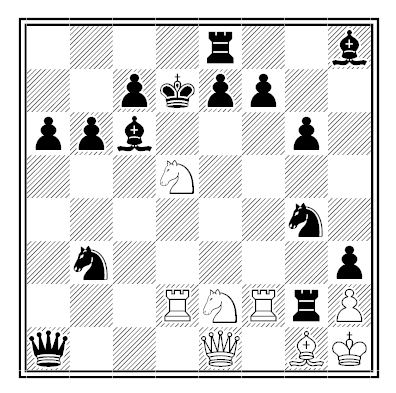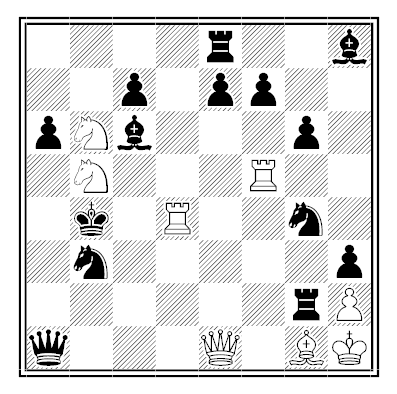Rimshot
A friend of mine, a cosey old bachelor, who has been looking into a prayer-book, says that the Matrimonial Service exactly resembles Matrimony itself, since they both begin with ‘Dearly Beloved,’ and both end with ‘Amazement.’
— The Nic-Nac; or, Oracle of Knowledge, May 10, 1823
In the Dark
Here are two principles about shadows:
- They don’t pass through opaque objects. Your shadow can fall on a wall, but not through it.
- Light must strike an object in order to cast a shadow. If you’re in the shade, you have no shadow.
Right? But now suppose the sun is behind you and you’re contemplating a butterfly:

The shadow under the butterfly is not cast by you (Principle 1), and it’s not cast by the butterfly (Principle 2). So what’s casting it?
“This is a genuine problem,” writes philosopher Robert Martin. “The rules for shadows aren’t inconsistent, but they are empirically inadequate — there are phenomena they do not fit.”
They Grow Up So Fast
The day before yesterday, Timmy was 13 years old. Next year he’ll be 16. What is his birthday, and what is today’s date?
Heated Words
Make the following experiment: say ‘It’s cold here’ and mean ‘It’s warm here.’ Can you do it? — And what are you doing as you do it? And is there only one way of doing it?
— Wittgenstein, Philosophical Investigations, 1953
Enter Here

Notable immigrants through Ellis Island:
- Isaac Asimov
- Charles Atlas
- Ludwig Bemelmans
- Irving Berlin
- Claudette Colbert
- Max Factor
- Bob Hope
- Lucky Luciano
- Bela Lugosi
- Arthur Murray
- Ezio Pinza
- Knute Rockne
Between Irish teenager Annie Moore in 1892 and Norwegian seaman Arne Peterssen in 1954, more than 12 million immigrants passed through the entry facility. Today, more than 100 million Americans can trace their ancestry back to them.
The Mpemba Effect
When University College physicist Denis Osborne visited Mkwawa Secondary School in Iringa, Tanzania, in 1963, he little expected the question he got from student Erasto Mpemba:
“If you take two similar containers with equal volumes of water, one at 35°C and the other at 100°C, and put them into a freezer, the one that started at 100°C freezes first. Why?”
The other students derided Mpemba, but he was right — in cooking class he’d noticed that hot ice cream mixes froze more quickly than cold ones.
Osborne confirmed the effect and shared a publication with Mpemba in 1969. What’s behind “the Mpemba effect” is still something of a mystery — it seems to be a combined result of supercooling, convection, evaporation, and the insulating effect of frost. (If you want to conduct your own experiment, start with containers at 35°C and 5°C.)
Anonymous
Who wrote The Treasure of the Sierra Madre? Strangely, no one knows. The novel is credited to B. Traven, but exactly who that is has been a matter of speculation for more than 80 years.
Most of Traven’s output was published between 1926 and 1939, composed in German sprinkled with Americanisms and frequently concerning leftist politics and Mexican history.
The writer himself never came forward, and he left only intriguing clues to his identity: In the 1920s apparently he was associated with Munich anarchist Erich Mühsam, and later a Mexican journalist discovered a bank account in Traven’s name in Acapulco. When John Huston filmed The Treasure of the Sierra Madre in 1947, a man claiming to be Traven’s agent visited the set and appeared to take an unusual interest in the proceedings, but he disappeared afterward.
Apparently that’s how he wanted it: It now appears that the writer took on at least four distinct identities during his lifetime. One of these men wrote, “I shall always and at all times prefer to be pissed on by dogs than reveal who I am.”
Big Sky Country
The winter of 1886-87 will be long remembered throughout the north-west for the extreme severity of the temperature and the unusual depth of snow. … Near Matt. Coleman’s ranch [in Fort Keogh, Montana] on January 28 the flakes were tremendous, some were larger than milk-pans. Some flakes measured 15 inches square and 8 inches thick. For miles the ground was covered with such bunches, and they made a remarkable spectacle while falling. A mail-carrier was caught in the same storm and verifies it.
— New York World, Feb. 14, 1887, quoted in a letter to Nature, March 3
Unquote
“To fall in love is to create a religion that has a fallible god.” — Borges


